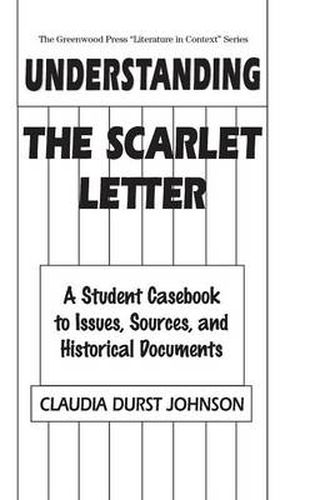Understanding The Scarlet Letter: A Student Casebook to Issues, Sources, and Historical Documents
Claudia Durst Johnson

Understanding The Scarlet Letter: A Student Casebook to Issues, Sources, and Historical Documents
Claudia Durst Johnson
Sexual misconduct of society’s leaders, the plight of single mothers, the separation of church and state - all are burning issues of the 1990s which sparked outrage and controversy 150 years earlier in The Scarlet Letter. Now, no study of American history is complete without thorough examination of Nathaniel Hawthorne’s timeless masterpiece. This multidisciplinary study of the novel contains historical documents, collateral readings, and commentary. In short, it is the ideal companion for students who wish to fully understand the novel in the context of its time, and to unlock its current relevance. Among the materials are original 17th-century documents that illuminate Puritan attitudes and bring the Salem witchcraft trials to life, private journals, historical reports, 19th-century magazine articles, sketches, and newspaper stories. Many of the documents are available in no other printed form. Not only do these materials provide a taste of 17th-century Puritan culture, but they also glimpse into Hawthorne’s mind as he comes to terms with his witch-hunting ancestors and his vocation. Most importantly, this casebook contemplates the many issues raised by The Scarlet Letter which inextricably link the 17th-century Puritans to the 19th century culture of Hawthorne to the present. Each section of this casebook contains study questions, topic ideas for written or oral expression, and lists of further readings for examining the issues raised by the novel. Designed as a resource for students, teachers, and library media specialists, the volume is cloth bound and printed on high quality acid-free paper, making it an excellent addition to every library collection.
A literary analysis focusing on the issues raised by the novel opens the casebook. In Part Two, the Puritan’s code of crime and punishment and the basic tenets of their belief are analyzed through original 17th-century diaries, letters, and testimony from the Salem witch trials. Part Three examines the novel’s introductory essay, the autobiographical The Custom House, which finds Hawthorne grappling with the role his ancestors played in persecuting the Quakers and the Salem witches, as well as his own internal conflict over his vocation as a fiction writer. The moral attitudes at the time of Hawthorne’s controversial work are also examined through reviews published at the time of publication. Part Four draws connections between two issues raised by the novel - the unwed mother and the lapsed minister - that remain controversial today and features recent news articles on these issues. A glossary of terms and a topic and person index complete this latest addition to Greenwood Press’ Literature in Context series.
This item is not currently in-stock. It can be ordered online and is expected to ship in approx 2 weeks
Our stock data is updated periodically, and availability may change throughout the day for in-demand items. Please call the relevant shop for the most current stock information. Prices are subject to change without notice.
Sign in or become a Readings Member to add this title to a wishlist.


